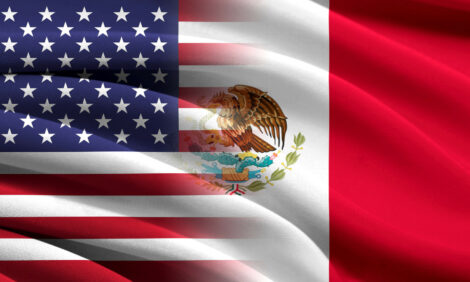



CME: 2012 Profit May be One of the Best on Record
US - The significant rally of CME Group Lean Hogs futures over the past 8 weeks has turned an apparently modest profit year for pork producers into potentially one of the best on record, write Steve Meyer and Len Steiner.
The charts below illustrate the current situation as well as some implications of this recent change.
First, Lean Hogs futures contracts from June 2012 forward
have all set contract life highs in recent trading session. The July contract touched $100 yesterday and June, July and August contracts all
closed yesterday’s pit-traded session above $99/cwt. They all remained in that rarified level on the Globex platform this morning. Colorful football coach Bum Phillips once said of the great Earl Campbell
“He may not be in a class by himself but it sure wouldn’t take long to
call roll.“ Ditto for these hog futures prices. Summer 2011 futures
eclipsed the $100 level in March and April of last year. August 2011
futures set a record high close of $107.45 as the expiring contract on
August 12 and June 2013 LH futures closed above $100 in 14 sessions last October and November. That’s it until yesterday — and it is
likely that more $100-plus days are coming given the momentum of
this market.
At the same time, projected breakeven costs have been as
low as $82/cwt carcass right after the January 12 surprise regarding
December corn stocks. Recent increases in corn and meal futures
have carried our projected annual average breakeven level back to
$85.06 as of yesterday. That is only $1.58/cwt lower than last year’s
record but would still provide handsome profits — $18.46 per head in
our model — for the year if hog prices match current futures levels.
That projected profit figure is $14 higher than it was in December.
And how does that stack up to history? Quite well indeed. In
fact, should the level of profits currently provided by corn, soybean
meal and lean hogs futures be realized, it will make 2012 the third
most profitable year since 1990, trailing only 2004 and 2005.
What will be the impact on the U.S. sow herd? Almost certainly positive. Note that the last modest expansion of the breeding
herd began in 2005 after producers experienced their second-best
year on record in 2004. That increase was only 0.9% from December
2004 to December 2005. An even better year in 2005 pushed the
growth rate to 1.4% in December 2006 and a good 2006 resulted in
nearly a 2% increase by December 2007. High corn prices and feed
costs hit in 2007 and drove a major liquidation as producers suffered
through their two worst years in history.
Producers have responded very slowly to the profits of 2010
and ‘11, with the breeding herd only growing 0.4% as of December 1.
But profits of the magnitude now projected for 2012 will very likely
drive larger growth that, when combined with roughly 2% more pigs
per sow will contribute to larger supplies in 2013.
Finally, pork producers have balance sheets that will support
an expansion without driving leverage ratios to dangerous levels. The
bottom chart tracks the amount of money a producer would have accumulated since January 1991 had they put the profit from one pig per
month in a savings account. It took 8 years to recover the losses of
1998-99 and took only a bit over two years to lose 81% of the September ‘07 peak. At currently-projected profit levels, over half of those
Sep ‘07-Feb’10 losses will have been recouped by the end of 2012









